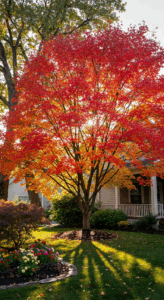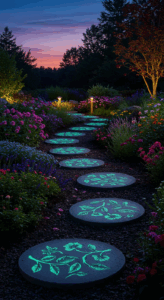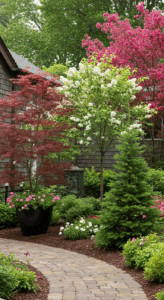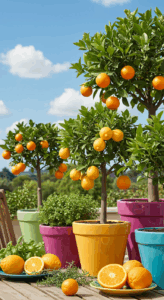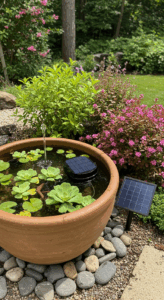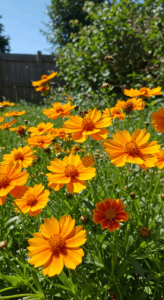1. Tiny Wonders: The Allure of Miniature Plants
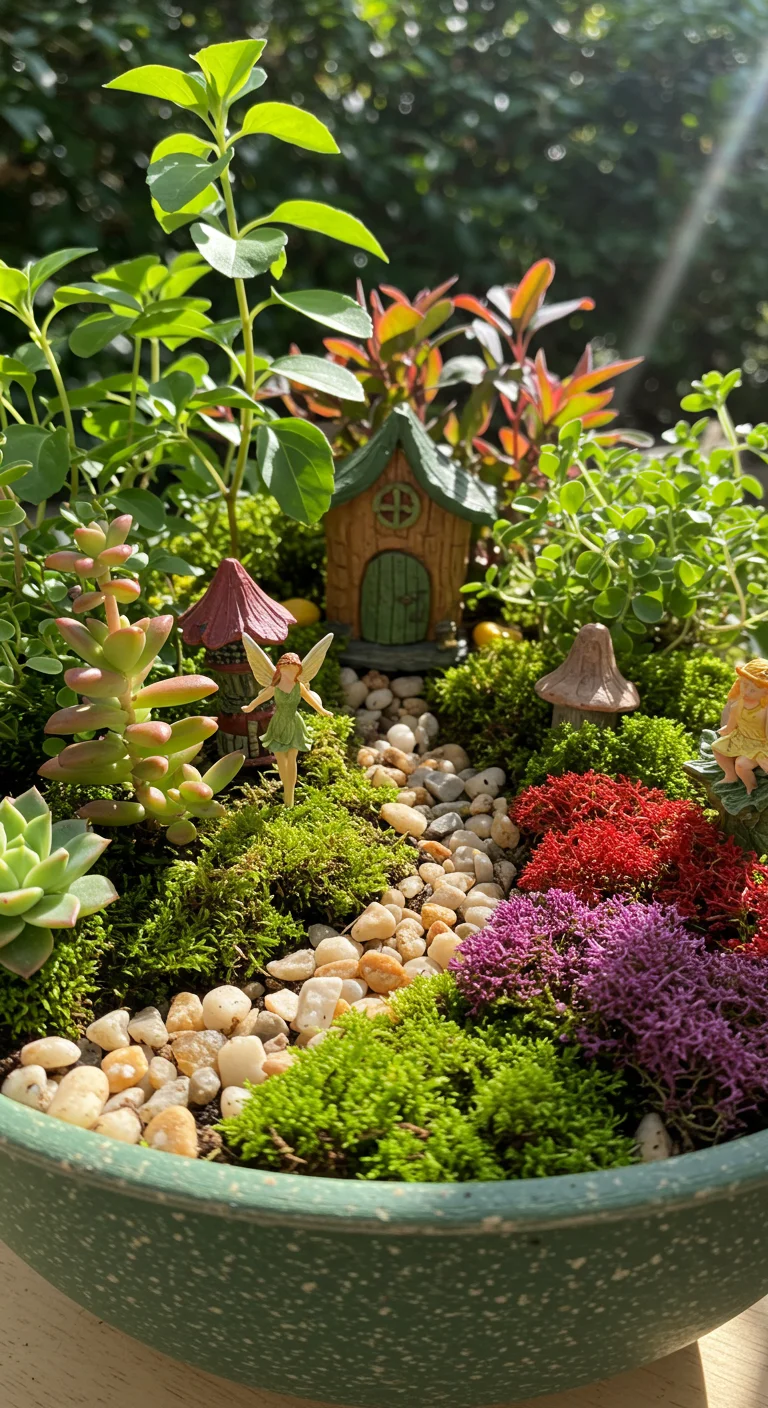
Tiny wonders are the heart and soul of fairy gardens, providing an enchanting touch to miniature landscapes. These diminutive plants, ranging from delicate succulents to vibrant mosses, offer diverse textures and colors that can transform any small space into a whimsical retreat. Ideal for container gardening, miniature plants thrive in limited soil and can adapt to various light conditions, making them perfect for indoor or outdoor settings. Some excellent choices include dwarf varieties of herbs, such as thyme and oregano, which not only look adorable but also add fragrance. With their manageable sizes and unique forms, these plants invite creativity, allowing gardeners to design charming scenes that spark the imagination and bring a touch of magic to everyday life.
2. Enchanting Ground Covers: Mosses to Marvel
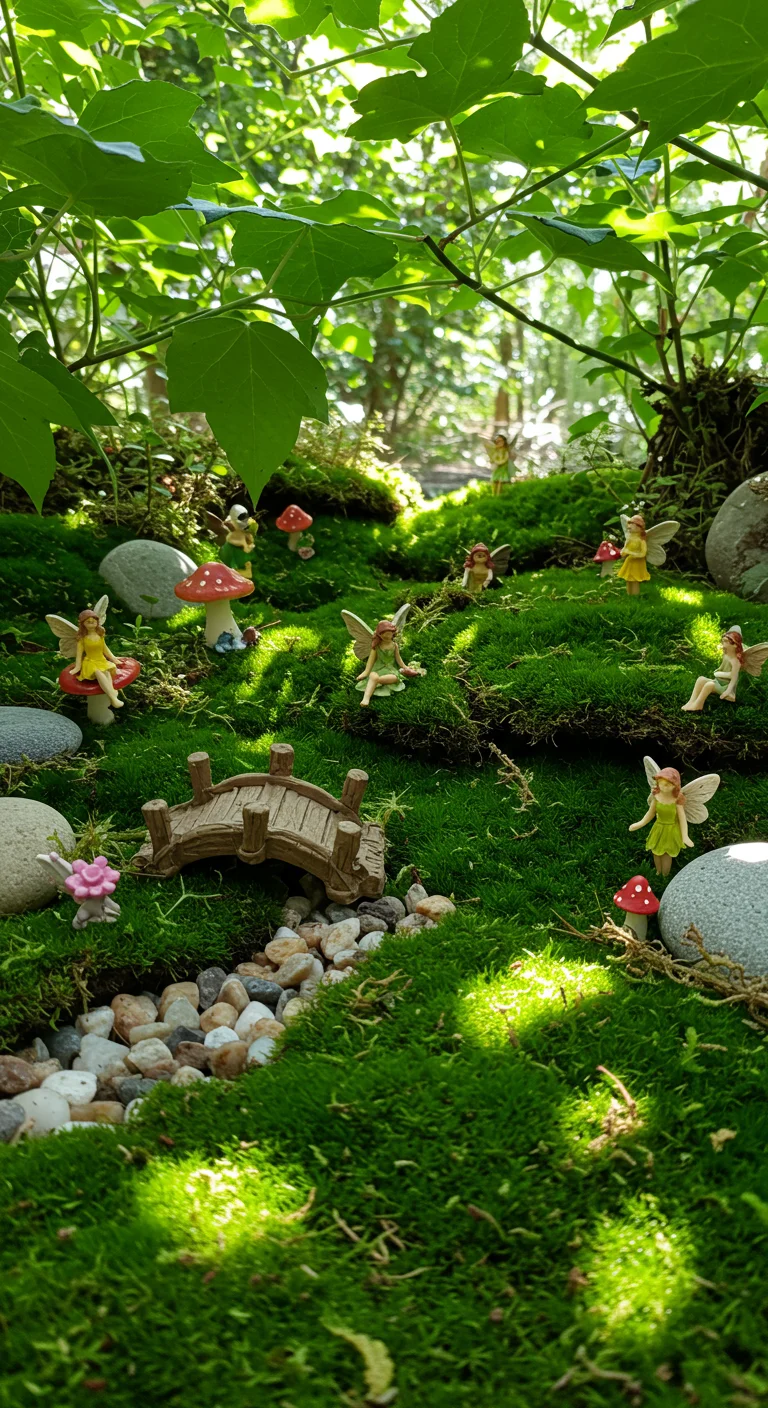
Mosses are a magical addition to any fairy garden, offering lush, green carpets that evoke a sense of tranquility and enchantment. These ground covers thrive in shaded or partially shaded areas, making them perfect for creating a soft, verdant base for your miniature landscapes. Popular varieties such as sheet moss, cushion moss, and haircap moss not only add texture but also help retain moisture, benefiting other plants in the garden. To encourage healthy growth, ensure that the soil remains consistently damp, and avoid direct sunlight, which can dry them out. Incorporating moss into your fairy garden not only enhances its aesthetic appeal but also provides a natural habitat for tiny creatures, enriching the ecosystem of your enchanting space.
3. Succulent Dreams: Drought-Resistant Beauties
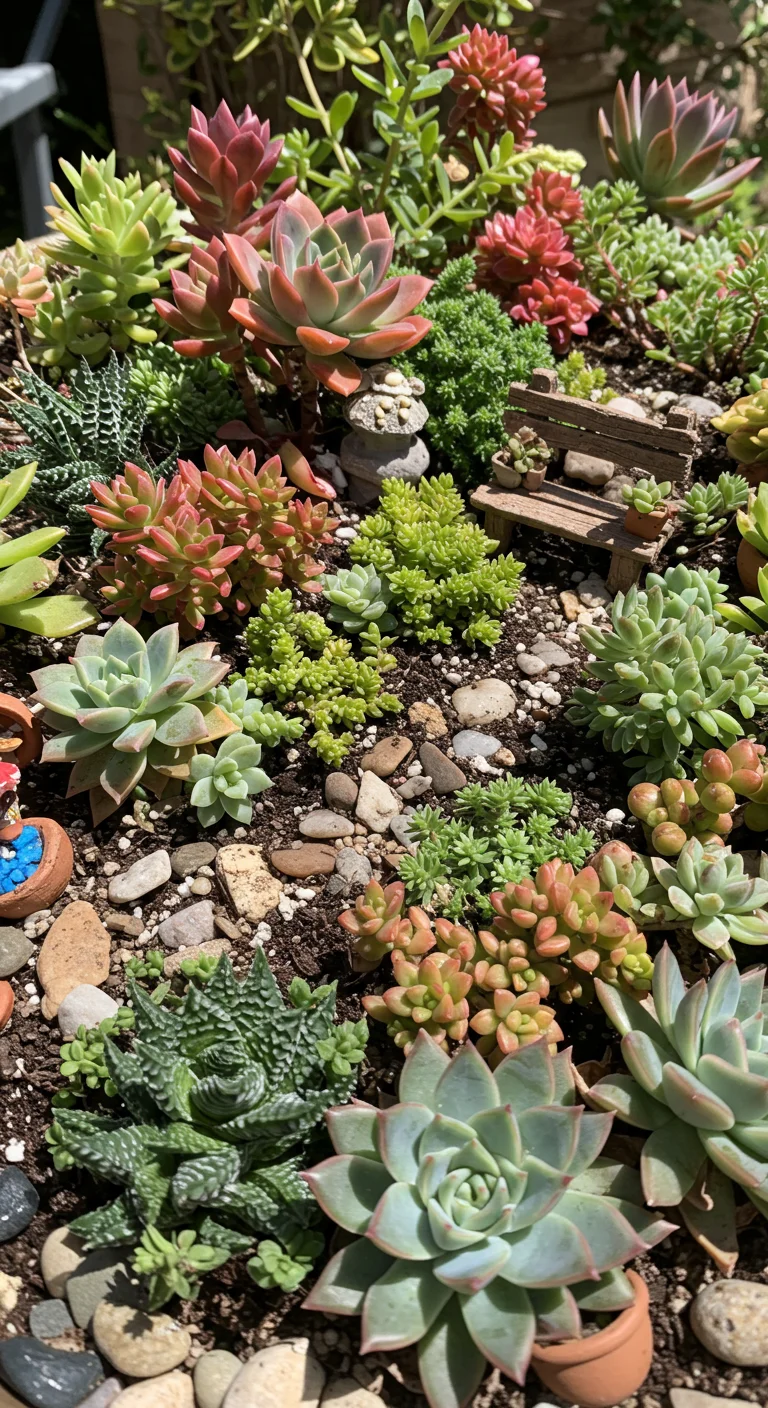
Succulent Dreams: Drought-Resistant Beauties are perfect for fairy gardens, offering vibrant colors and unique shapes while requiring minimal water. These hardy plants, including Echeveria, Sedum, and Haworthia, thrive in sunny spots and well-draining soil, making them ideal for miniature landscapes. Their fleshy leaves store moisture, allowing them to withstand prolonged dry spells, which is especially beneficial for gardeners in arid regions. To create a stunning display, mix various types of succulents with different textures and hues, and consider adding decorative stones or driftwood to enhance the visual appeal. Not only do these drought-resistant beauties contribute to a low-maintenance garden, but they also attract beneficial pollinators, adding life to your enchanting fairy realm.
4. Delicate Blooms: The Magic of Miniature Flowers
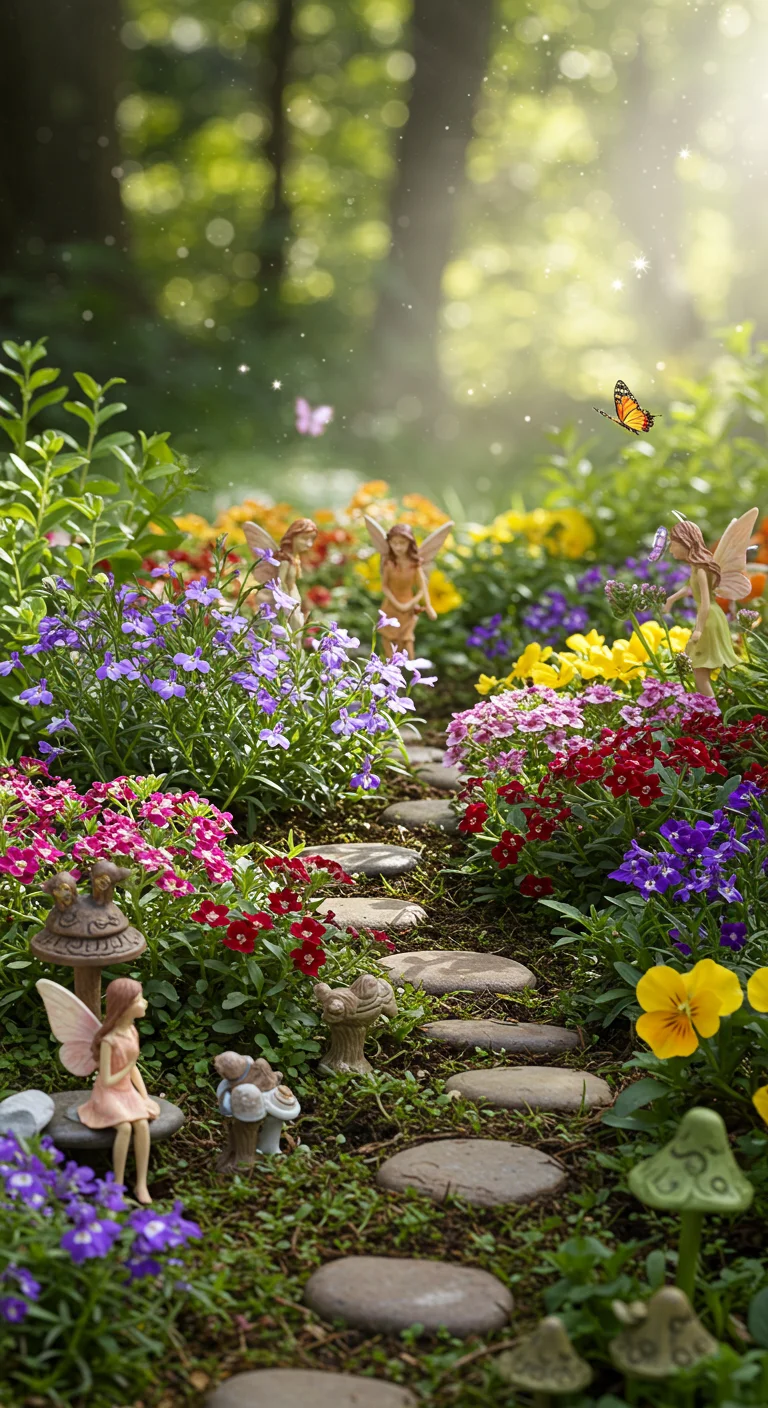
Delicate blooms add an enchanting touch to any fairy garden, providing both color and charm in miniature landscapes. When selecting miniature flowers, consider varieties like lobelia, alyssum, and dwarf pansies, which not only thrive in small spaces but also bloom profusely throughout the growing season. These flowers typically require well-draining soil and benefit from regular watering, though it’s essential to avoid overwatering. Plant them in clusters for a fuller appearance, and mix colors to create a vibrant tapestry that attracts pollinators such as bees and butterflies. Additionally, pairing these delicate blooms with tiny decorative elements like fairy figurines or miniature stones can enhance the magical atmosphere of your garden, making it a delightful retreat for both you and your imaginary inhabitants.
5. Whimsical Herbs: Fragrant Foliage for Fairy Gardens
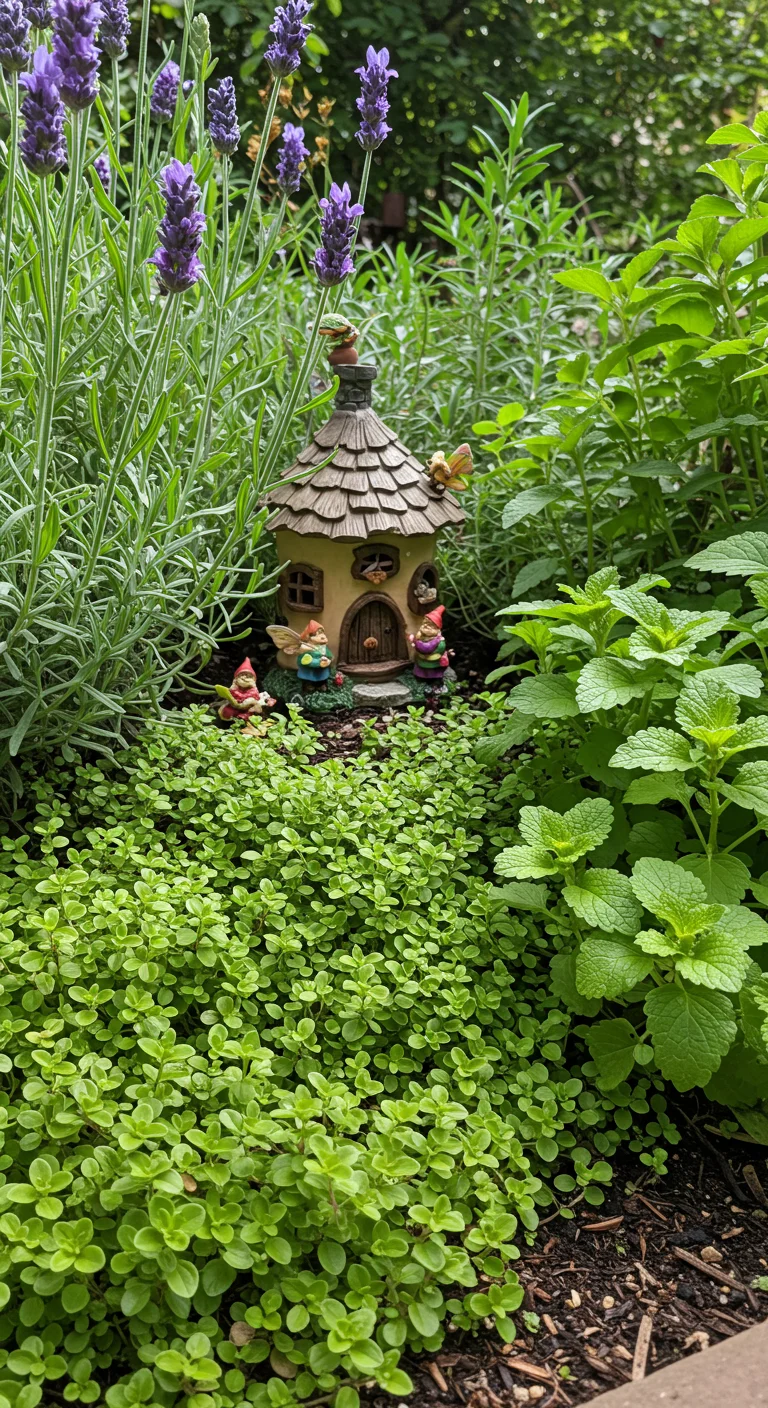
Whimsical herbs are a delightful addition to any fairy garden, offering both fragrance and charm. Consider incorporating plants like lavender, with its enchanting purple blooms and soothing scent, or lemon balm, which emits a refreshing citrus aroma. These herbs not only attract beneficial pollinators but also provide a sensory experience for visitors. Thyme, particularly creeping varieties, can create lush green carpets, while adding a touch of culinary intrigue. For an added layer of magic, choose herbs with variegated foliage, such as variegated sage, to introduce visual interest. Ensure these herbs are planted in well-draining soil and receive ample sunlight, as they thrive in conditions that mimic their natural habitats. By mixing whimsical herbs into your fairy garden, you create an inviting atmosphere that appeals to both the imagination and the senses.
6. Colorful Contrasts: Variegated Leaves for Visual Interest
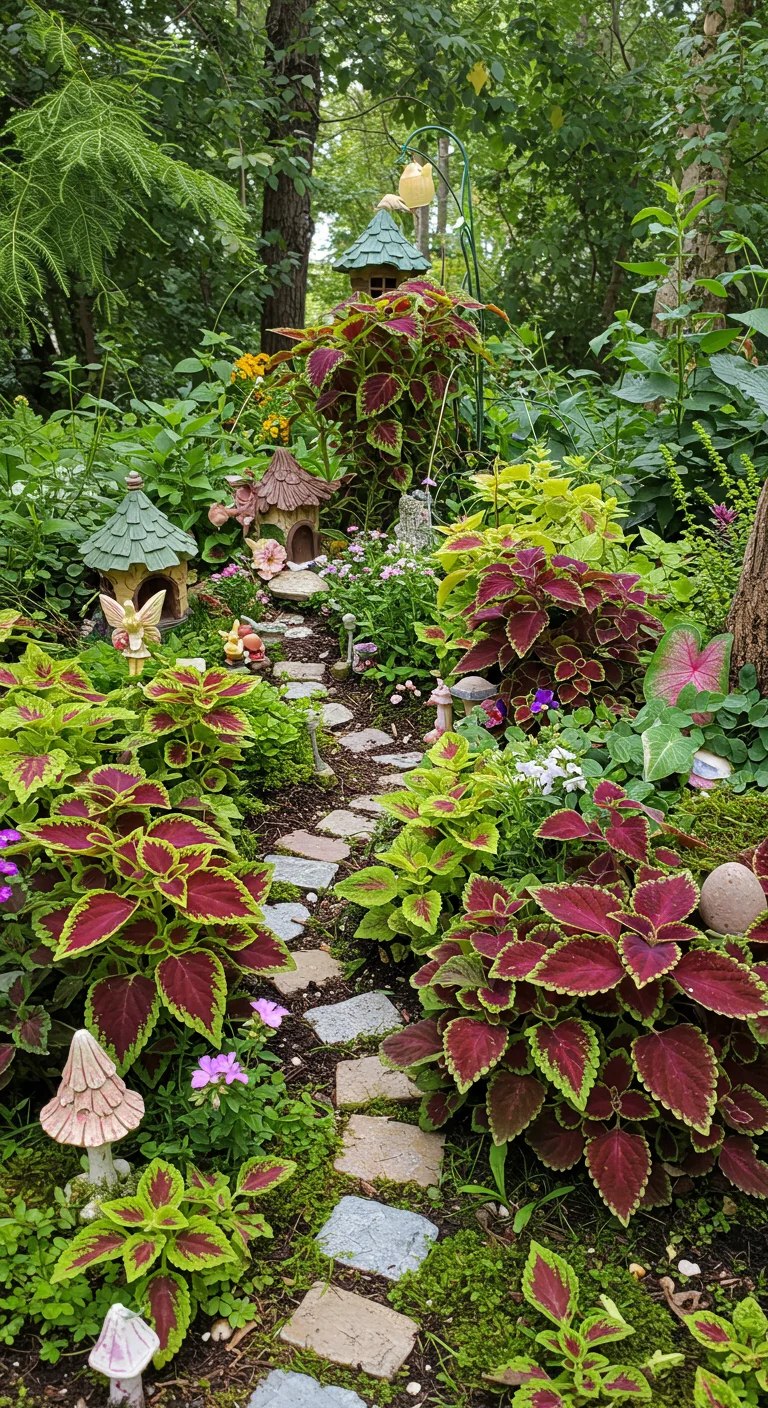
Incorporating variegated leaves into your fairy garden can elevate its aesthetic appeal and create striking visual contrasts. Plants such as the colorful ‘Coleus’ or the unique ‘Caladium’ offer vibrant patterns and hues that can complement other greenery and miniature decor. These plants thrive in various conditions, allowing flexibility in placement, whether in shaded corners or sunlit spots. Additionally, the mix of colors and shapes not only adds depth to your landscape but also draws the eye, creating focal points that entice visitors to explore your miniature world. When planning your garden, consider combining these variegated species with solid green plants to enhance the overall impact, ensuring a dynamic and enchanting fairy garden experience.
7. Dainty Ferns: Lush Greenery for Shady Spots
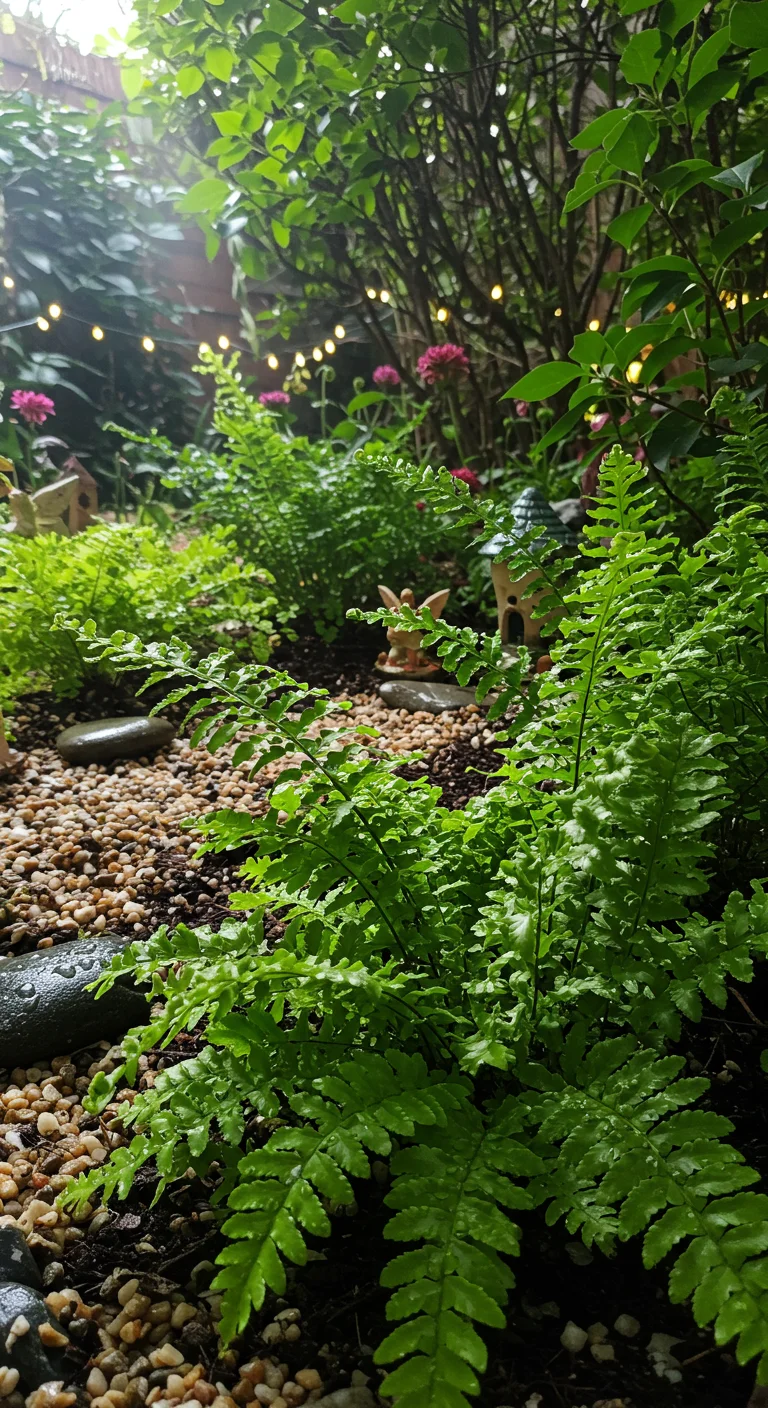
Dainty ferns are a perfect choice for adding lush greenery to the shaded areas of your fairy garden. These delicate plants thrive in low-light conditions, making them ideal for spots beneath trees or other structures. Varieties like the maidenhair fern and the button fern not only bring a soft texture but also create a whimsical backdrop for miniature fairy houses and other decorative elements. They require minimal maintenance, needing only regular watering to keep the soil moist but not soggy. Position them strategically among stones or around pathways to enhance the enchanting atmosphere of your garden. By incorporating dainty ferns, you can effortlessly create a serene and inviting space that beckons fairies and garden dwellers alike.
8. Alpine Charm: Rock Garden Plants for Fairy Landscapes
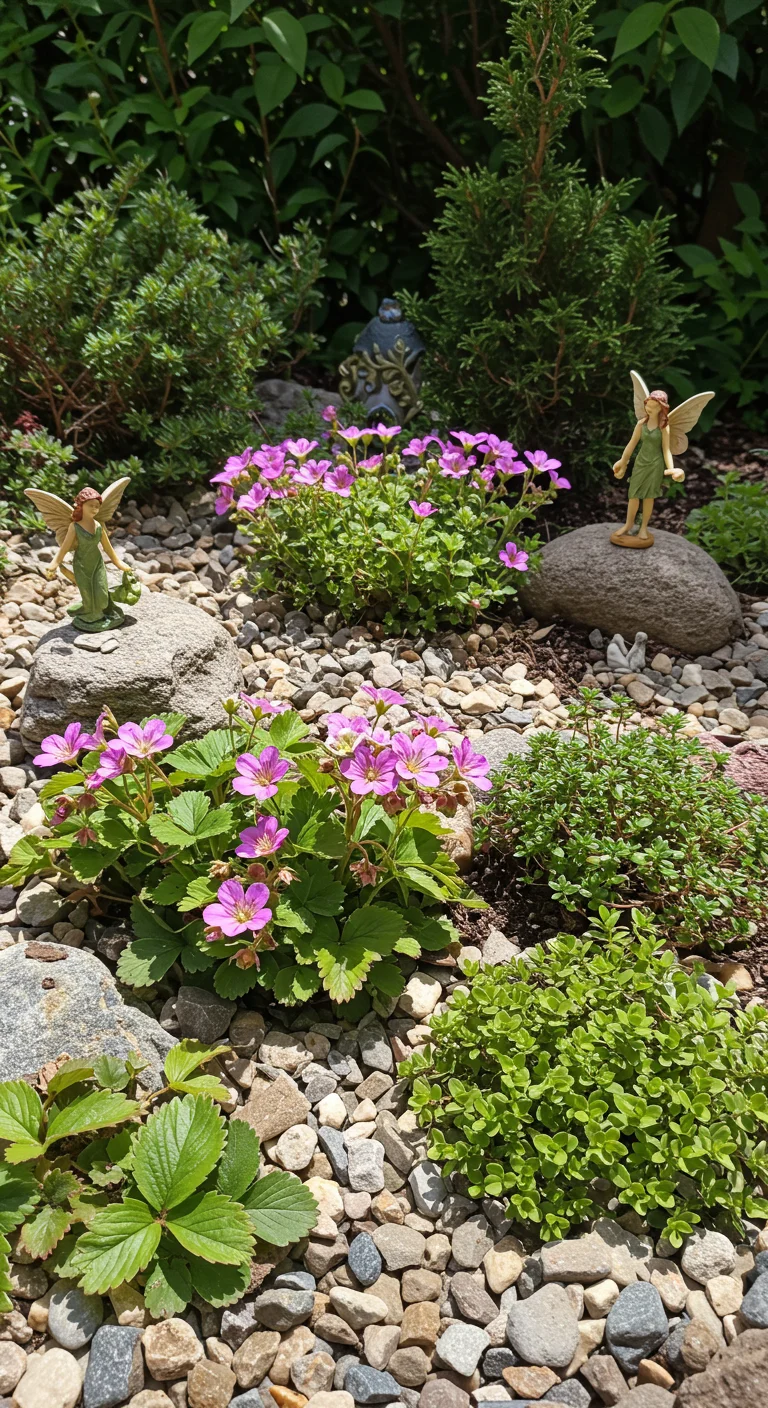
Alpine charm can transform your fairy garden into a whimsical retreat, perfect for miniature landscapes. Rock garden plants like alpine strawberries, saxifrage, and creeping thyme thrive in rocky, well-drained soil and require minimal maintenance, making them ideal for a low-effort yet enchanting display. The compact growth habit of these plants allows for easy arrangement among decorative stones and fairy figurines, while their vibrant blooms add bursts of color throughout the seasons. Consider adding dwarf conifers for vertical interest and choose plants with varying heights to create depth. This combination not only enhances the aesthetic appeal but also provides a natural habitat for butterflies and beneficial insects, enriching your fairy garden’s ecosystem.
9. Tiny Trees: Dwarf Varieties to Create Vertical Interest
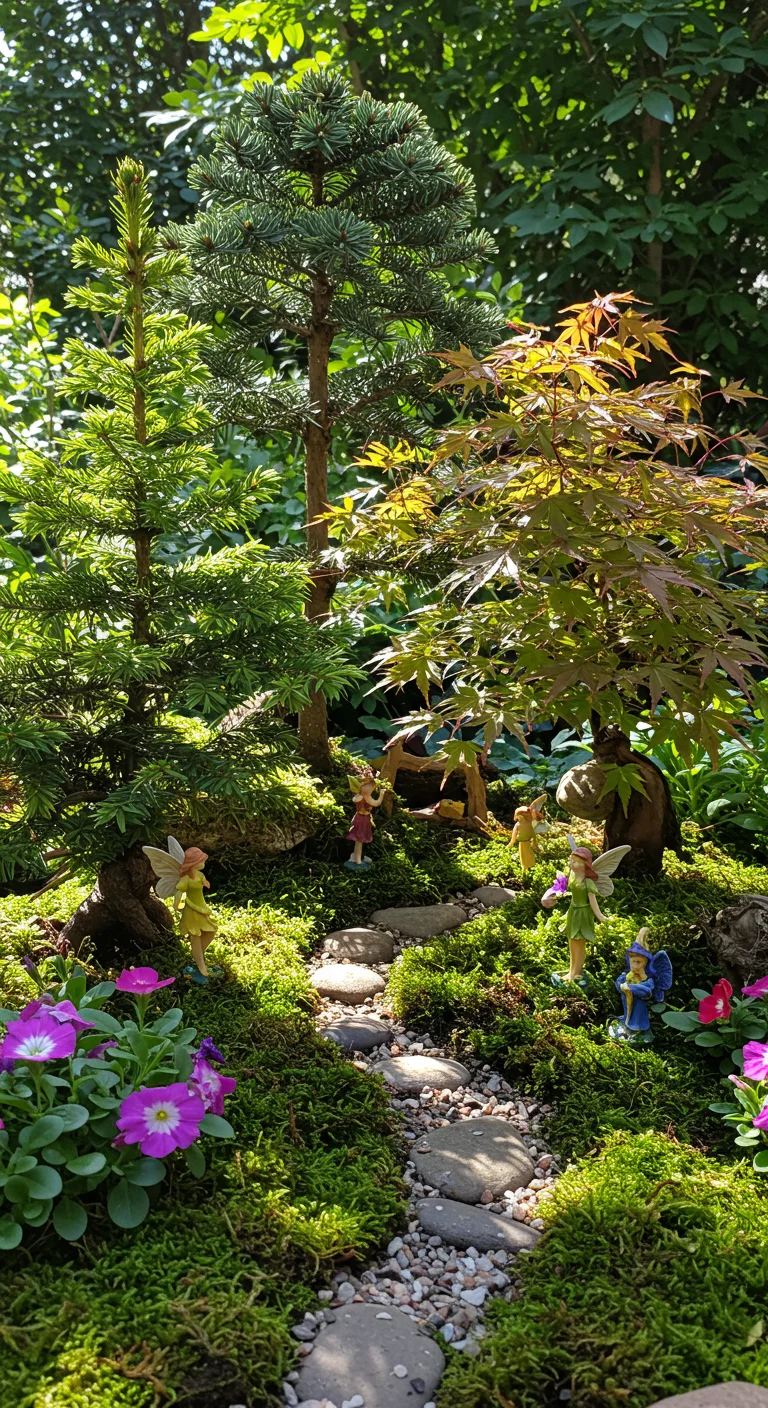
Dwarf varieties of trees play a crucial role in enhancing vertical interest in fairy gardens, allowing you to create enchanting mini landscapes without overwhelming the space. Varieties such as the Dwarf Alberta Spruce, which reaches only 3 to 6 feet tall, or the Japanese Black Pine, known for its slow growth and unique texture, can serve as focal points or natural dividers within your miniature realm. Other excellent choices include the Bonsai Maple and the Globe Blue Spruce, both of which add vibrant colors and interesting shapes. When selecting dwarf trees, consider their growth habits and seasonal changes to ensure a dynamic visual experience throughout the year. These tiny trees not only add height and depth but also create a whimsical canopy, inviting imagination and storytelling into your fairy garden.
10. Ground-Hugging Sedums: Perfect for Fairy Paths
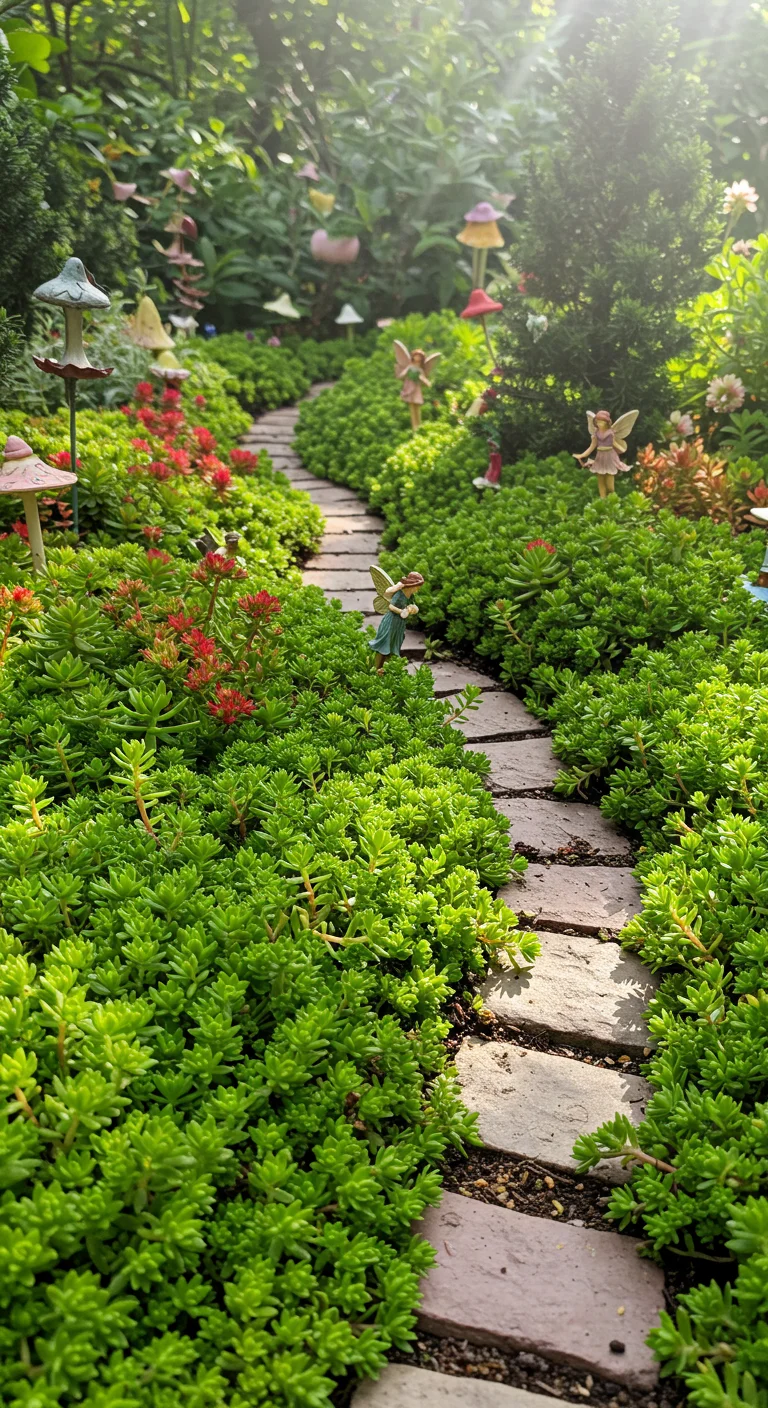
Ground-hugging sedums are an excellent choice for creating enchanting fairy paths in miniature gardens. These low-growing succulents, such as Sedum album and Sedum spurium, provide vibrant green foliage and colorful blooms that add charm and texture to your fairy landscapes. Their ability to thrive in poor soil and withstand drought makes them ideal for low-maintenance gardens, allowing fairies to wander through lush greenery without the worry of upkeep. The mat-forming nature of sedums creates a soft carpet effect, inviting exploration and enhancing the whimsical atmosphere. Plant them between stones or along miniature pathways to establish a fairy-friendly environment that looks beautiful and requires minimal care, ensuring your fairy garden remains a delightful retreat year-round.
11. Vintage Vibes: Heirloom Plants for Nostalgic Touch
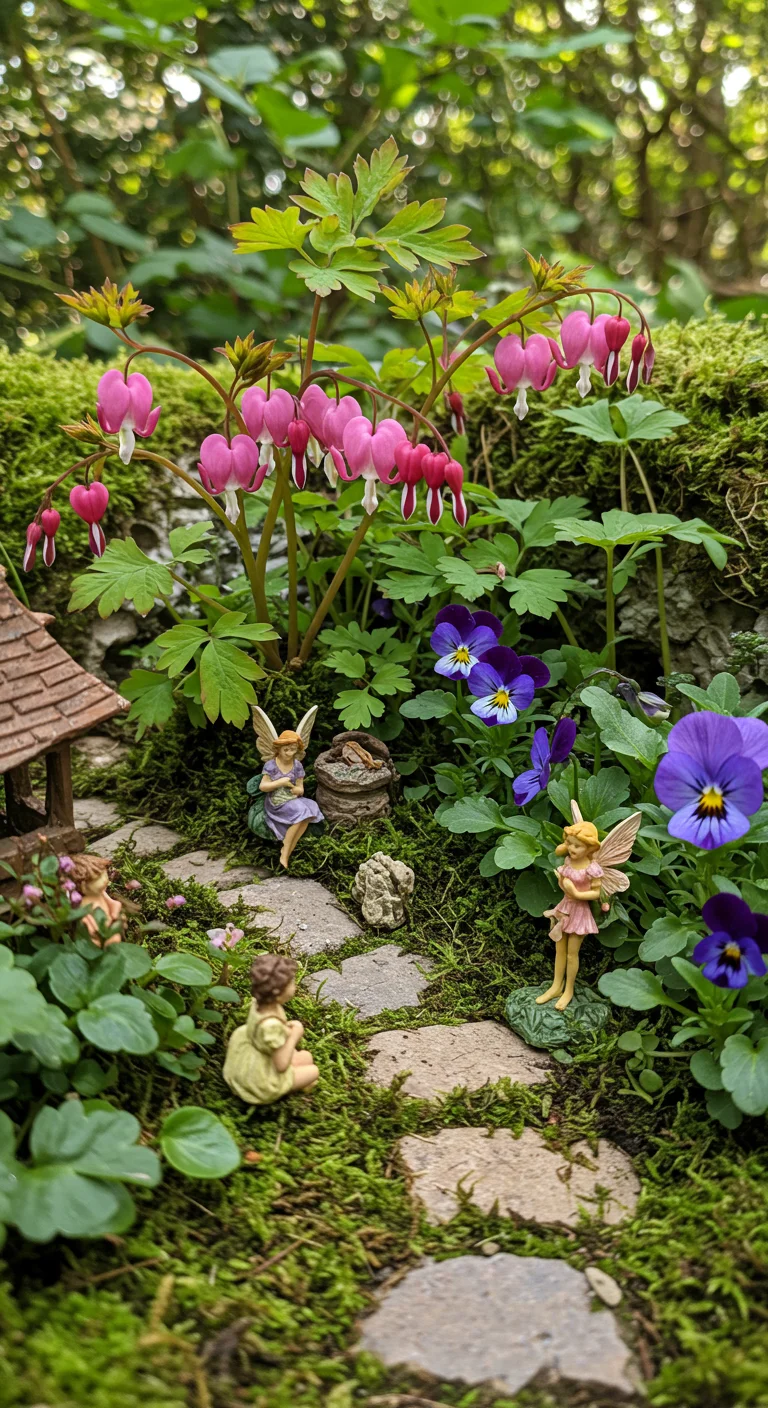
Incorporating heirloom plants into your fairy garden not only adds a touch of nostalgia but also connects you with the rich history of gardening. Varieties such as the delicate ‘Old-fashioned Bleeding Heart’ (Dicentra spectabilis) and the charming ‘Sweet Violet’ (Viola odorata) can evoke memories of childhood gardens. These vintage plants are often hardy and adaptable, making them perfect for miniature landscapes. To create a whimsical and inviting atmosphere, consider arranging them alongside other vintage favorites like ‘Pansies’ or ‘Hens and Chicks’ (Sempervivum). By selecting these heirloom varieties, you not only enhance the aesthetic appeal of your fairy garden but also honor the traditions of gardening that have been passed down through generations.
12. Colorful Carnivores: Adding a Quirky Twist with Pitcher Plants
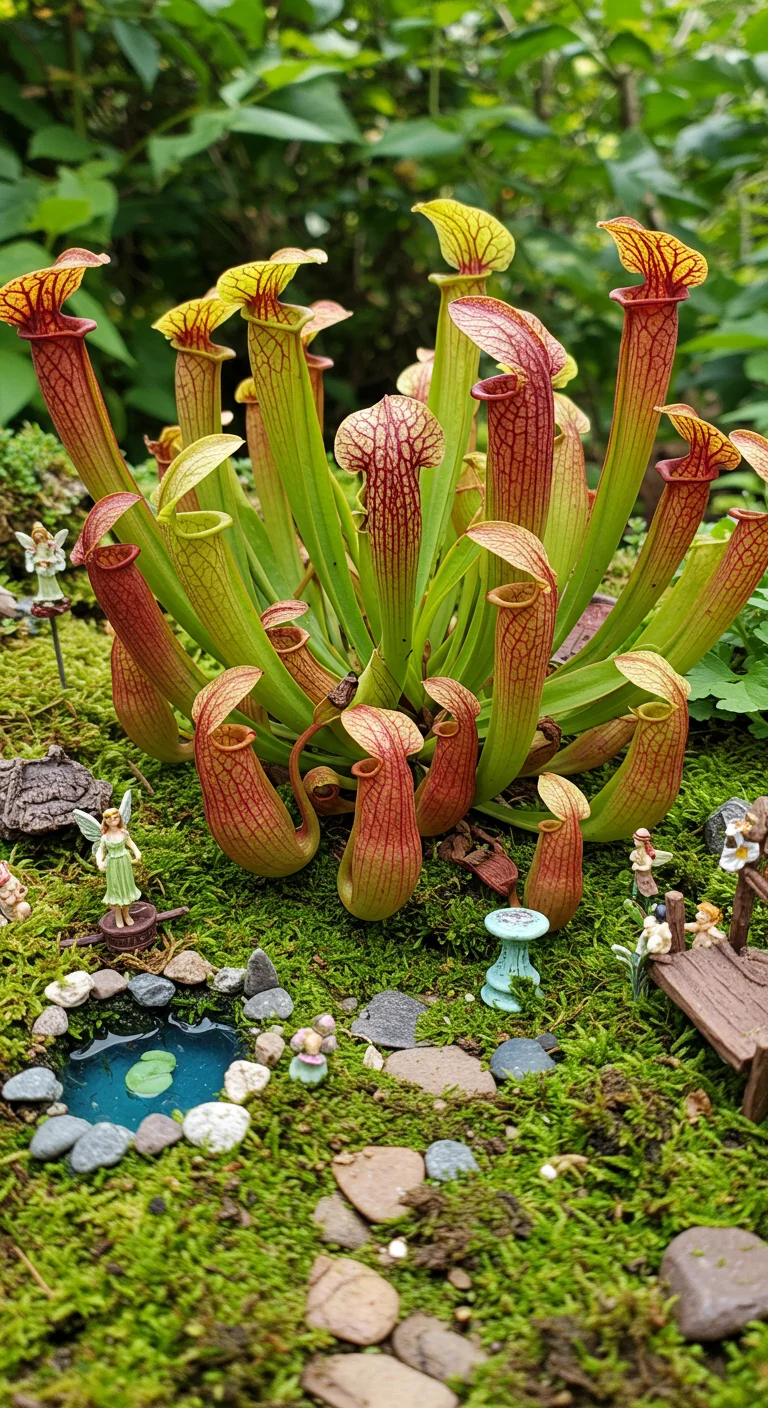
Colorful carnivores like pitcher plants serve as a striking addition to any fairy garden, infusing a quirky twist into miniature landscapes. These unique plants, characterized by their tubular leaves that trap insects, come in a variety of vibrant colors and patterns, making them visually appealing while also serving a functional role in pest control. Ideal for warm, humid environments, pitcher plants thrive in well-drained soil and require bright, indirect sunlight. When incorporating them into your fairy garden, consider pairing them with whimsical decorations like tiny fairies or miniature ponds to enhance their enchanting presence. Additionally, their intriguing shapes and textures can create focal points that draw visitors into your garden’s magical story, making them a captivating choice for both novice and experienced gardeners alike.
13. Vibrant Annuals: Temporary Touches of Color
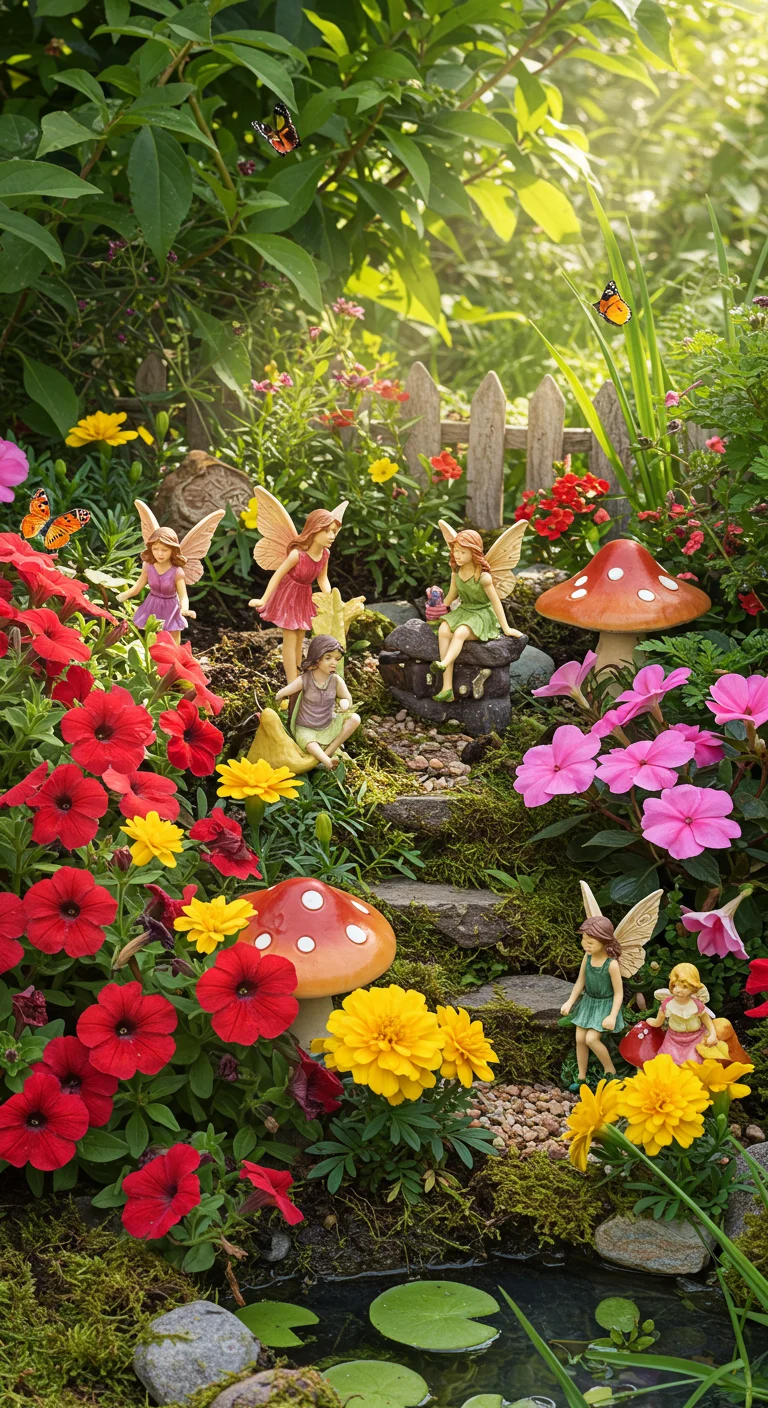
Vibrant annuals are an excellent choice for adding splashes of color to your fairy garden, as they bloom profusely throughout the growing season. These plants, such as petunias, marigolds, and impatiens, not only provide a cheerful aesthetic but also attract beneficial pollinators like butterflies and bees. Annuals are versatile and can be easily interchanged each year, allowing for fresh designs in your miniature landscapes. They thrive in various conditions, from sunny spots to shaded corners, making them adaptable to different fairy garden layouts. To ensure a continuous display, stagger plantings or choose varieties with staggered bloom times. Incorporating these lively plants will create a dynamic environment that enhances the enchanting atmosphere of your fairy garden.
14. Sweet Scent: Fragrant Flowers to Attract Fairies
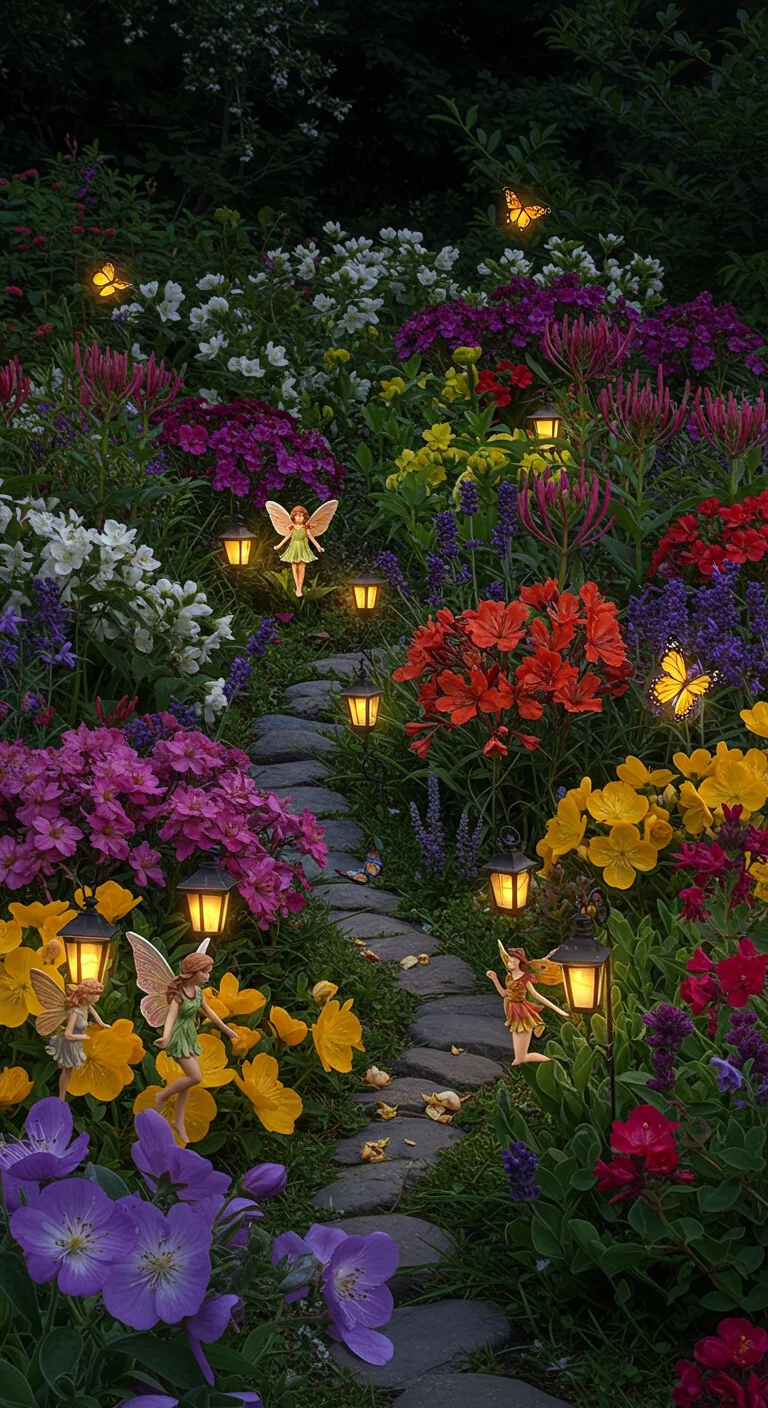
To create a fairy-friendly atmosphere in your garden, incorporating fragrant flowers is essential. Sweet scents like jasmine, lavender, and honeysuckle not only attract fairies but also invite butterflies and bees, enhancing the whimsical ambiance. Consider planting evening primrose or night-blooming jasmine for a nighttime fragrance that can entice fairies to dance under the moonlight. Additionally, herbs like rosemary and mint can add both scent and culinary potential, making your fairy garden a multi-sensory experience. Arrange these fragrant flowers in clusters or borders around your fairy installations, ensuring they bloom at varying times throughout the season for continuous allure. With the right selection, your garden will become a fragrant haven that beckons fairies to visit and linger.
15. Foliage Fantasies: Unique Leaf Shapes for a Whimsical Look
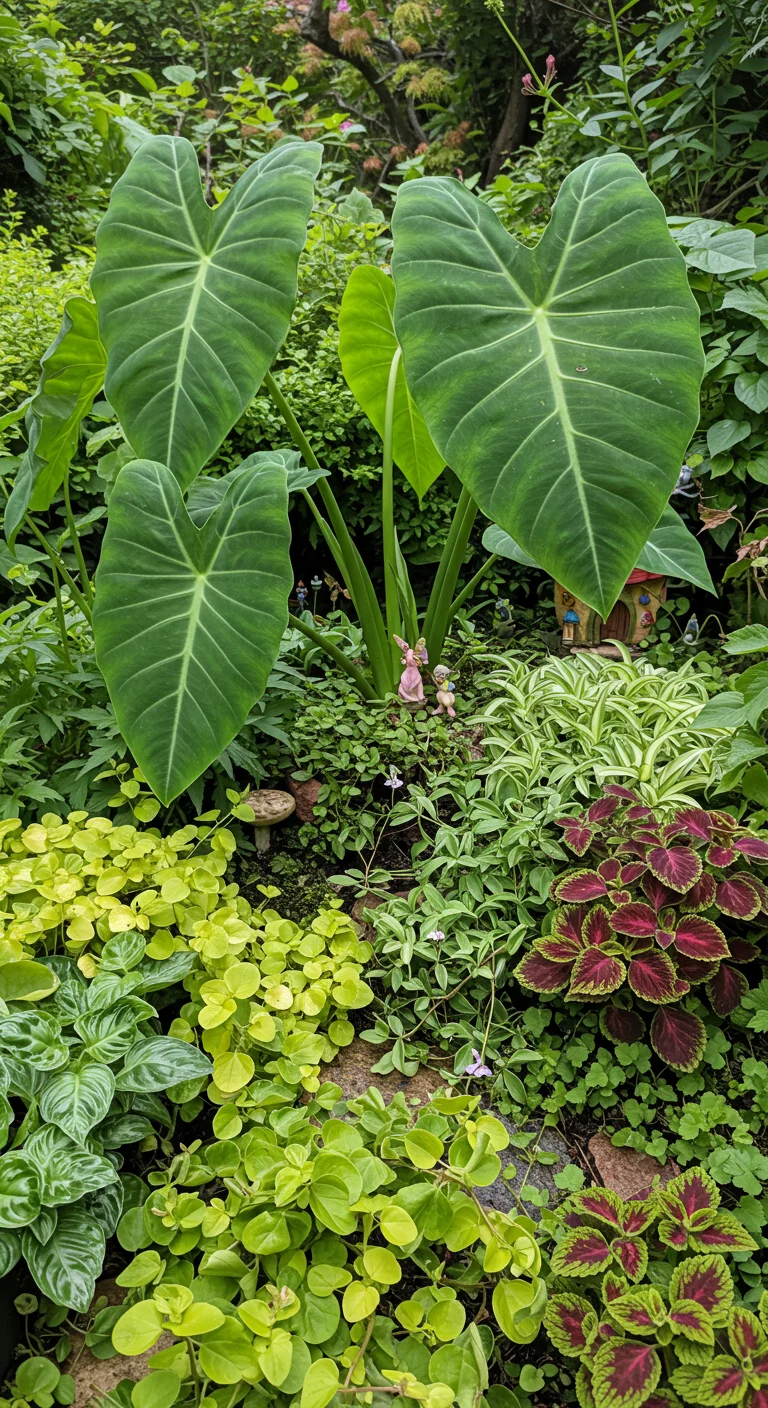
Incorporating unique leaf shapes into your fairy garden can transform it into a whimsical landscape. Consider plants like the ‘Dancing Elephant Ears’ with their large, heart-shaped leaves that sway gently in the breeze, or the ‘Curly Spider Plant’ featuring spiraled foliage that adds a playful twist. The ‘Japanese Maple’ offers delicate, lacy leaves that create a fairy-tale atmosphere, while ‘Creeping Jenny’ boasts vibrant golden leaves that cascade over rocks and pathways. For a pop of color, try the ‘Coleus’ with its variegated leaves in striking reds and greens. These diverse leaf shapes not only enhance visual interest but also provide unique textures and colors that invite exploration, making your miniature landscape enchanting and lively.
16. Creeping Beauties: Plants That Love to Climb
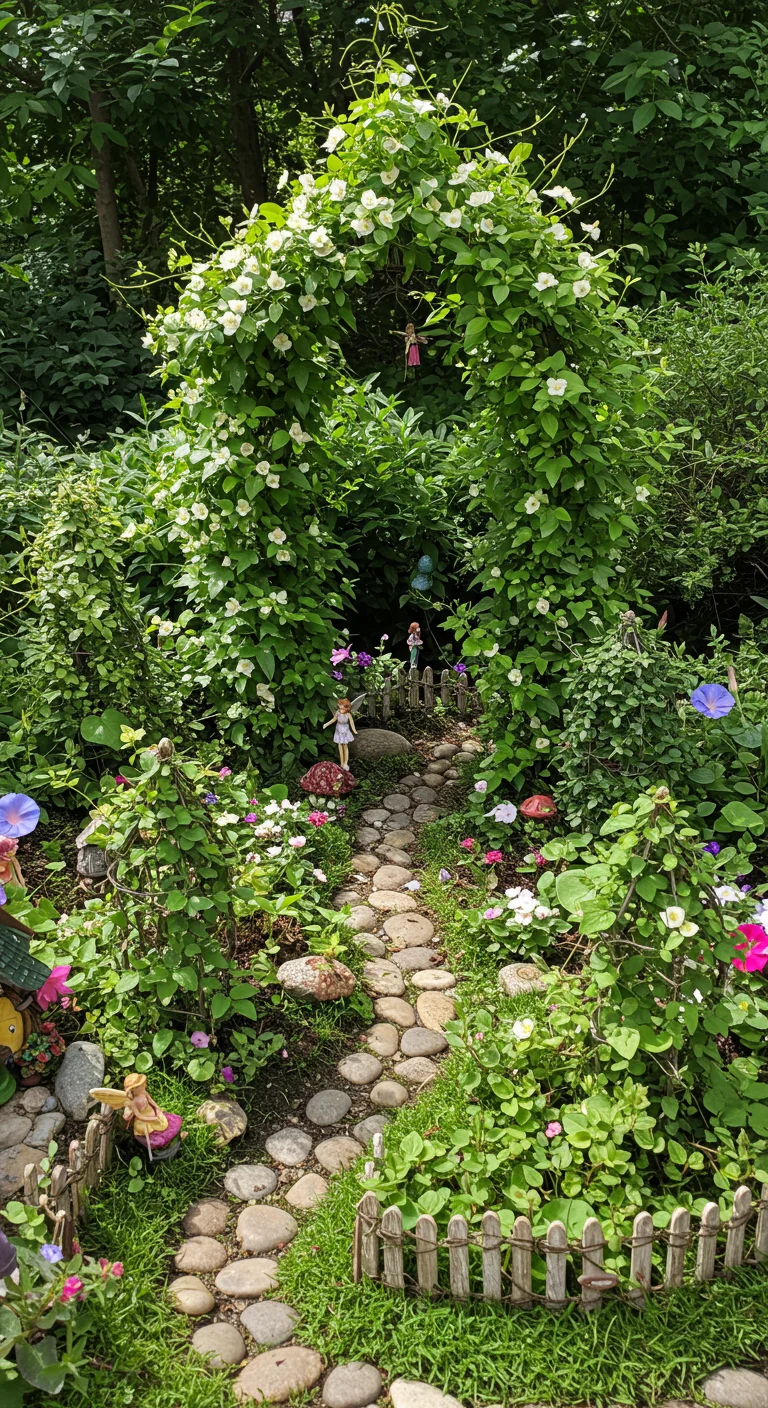
Creeping beauties are a delightful addition to any fairy garden, bringing vertical interest and enchanting charm. Climbing plants like the sweet-smelling jasmine, vibrant morning glories, and lush ivy can create a whimsical atmosphere as they twine around trellises, miniature fences, or even small garden structures. These plants not only enhance the visual appeal but also provide habitats for tiny garden creatures, further enriching the fairy ecosystem. When selecting climbing plants, ensure they thrive in your local climate and consider their growth habits to maintain scale in your miniature landscape. Regular pruning will help control their spread and keep your fairy garden looking tidy and magical.
17. Edible Enchantment: Incorporating Vegetables into Fairy Gardens
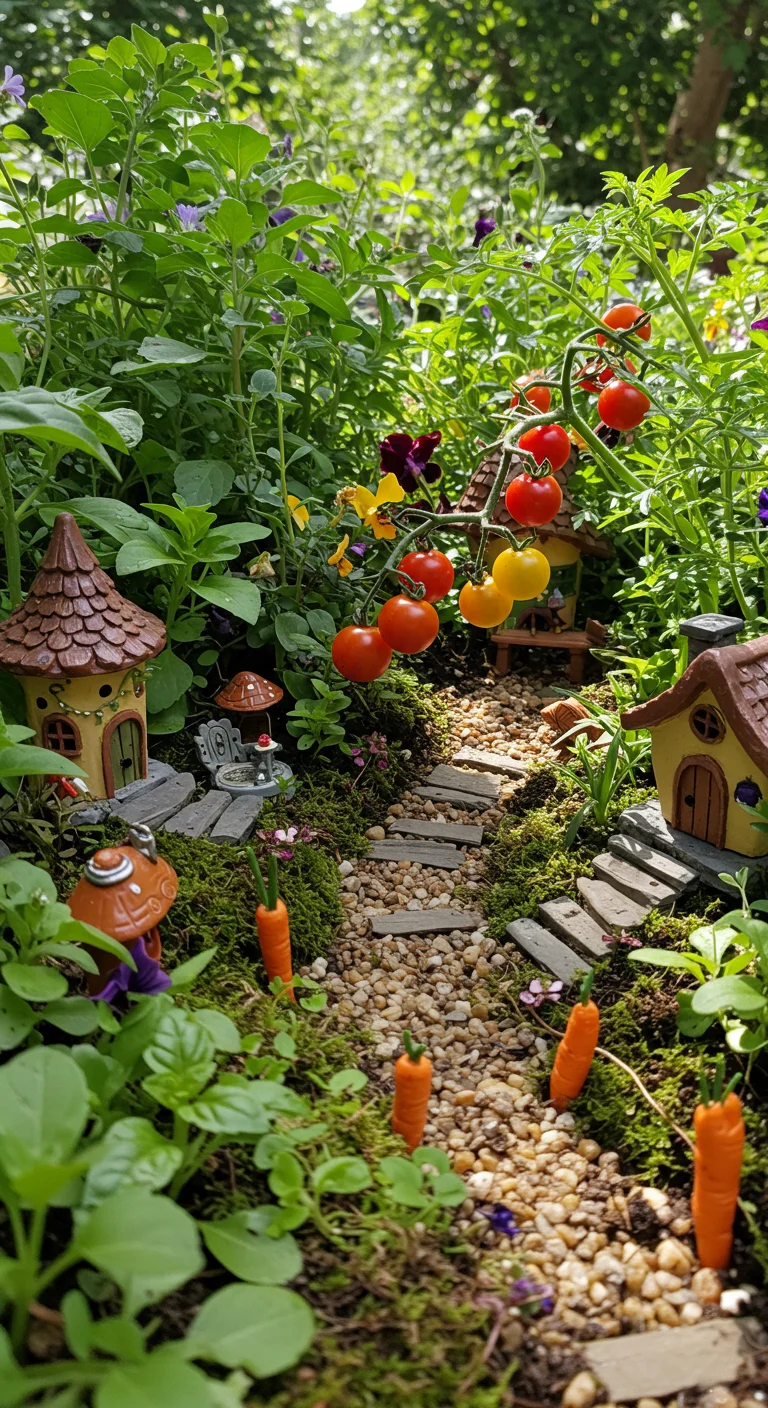
Incorporating vegetables into your fairy garden not only adds an enchanting touch but also promotes sustainability and functionality. Choose miniature varieties like dwarf carrots, radishes, or cherry tomatoes, which can thrive in small spaces while providing vibrant colors and textures. Opt for herbs such as basil, thyme, and chives, which lend delightful scents and can serve culinary purposes. Arrange these edible plants alongside traditional fairy garden elements, like tiny fairy houses and whimsical pathways, to create a harmonious blend of beauty and utility. Remember to consider the growing conditions each vegetable needs, ensuring your fairy garden is both visually appealing and productive throughout the growing season, adding a magical twist to your gardening experience.
18. Seasonal Stars: Plants That Shine Year-Round
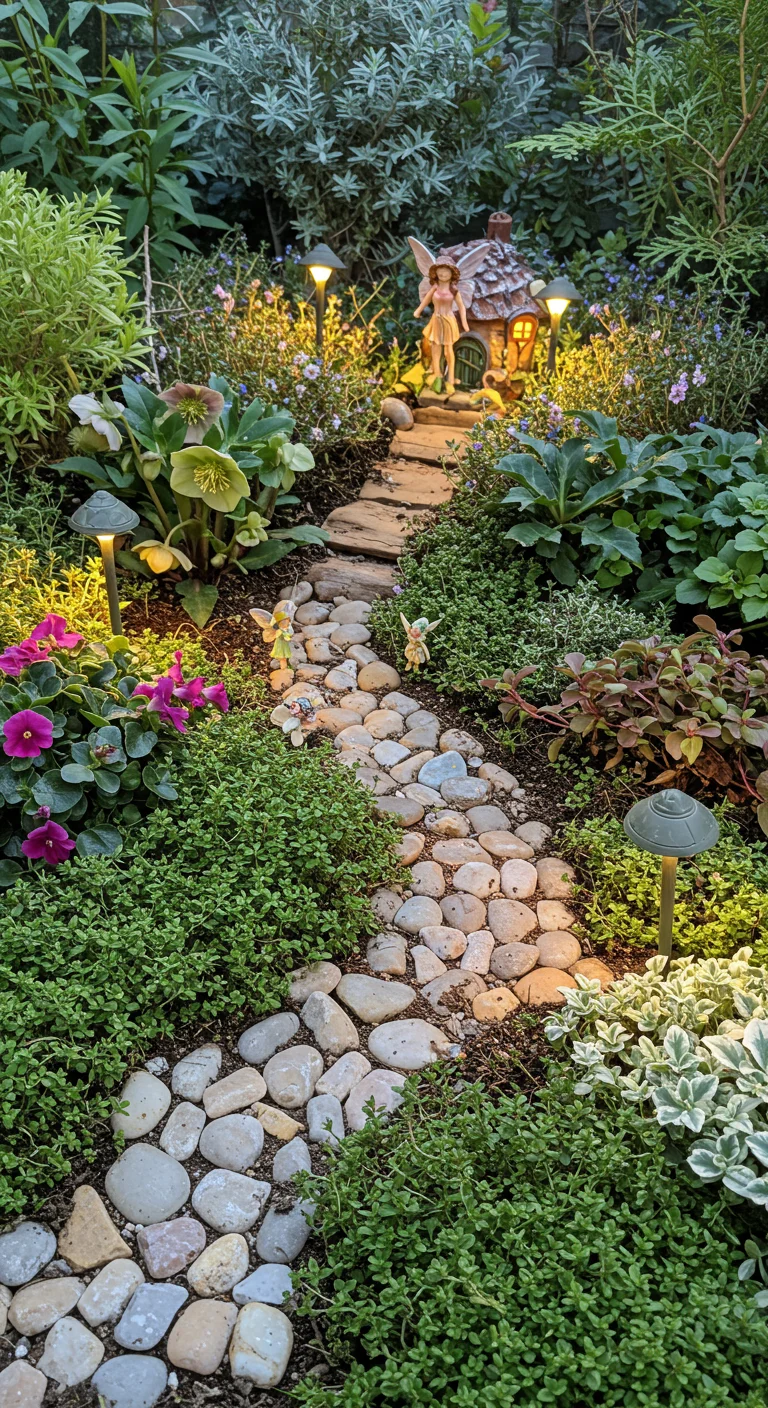
When crafting a fairy garden, selecting seasonal stars—plants that retain their beauty throughout the year—can create a lush, enchanting landscape. Consider incorporating evergreen varieties such as creeping thyme and dwarf conifers, which provide lush greenery even in winter. Flowering plants like hellebores and winter jasmine bloom early in the season, adding vibrant colors to your garden. Additionally, succulents like sedum and hens-and-chicks thrive in various climates, showcasing their unique shapes year-round. By mixing these hardy, seasonal stars with annuals and perennials, you can ensure your fairy garden remains captivating and inviting no matter the season, allowing for a whimsical retreat that delights the senses all year long.
19. Coastal Inspirations: Beachy Plants for Coastal Fairy Gardens
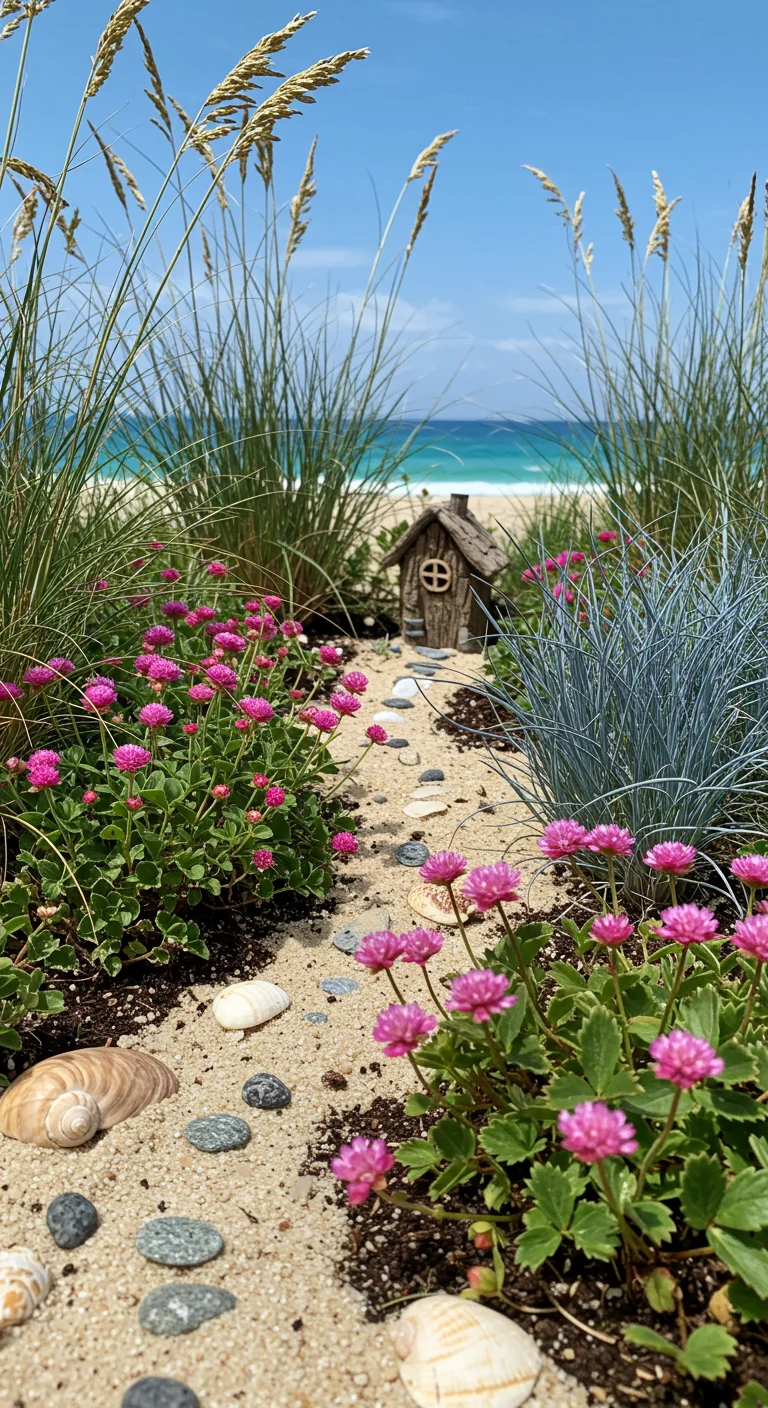
Creating a coastal fairy garden can transport you to a serene beach setting, even in your backyard. Some beachy plants that thrive in sandy or coastal conditions include Sea Oats (Uniola paniculata), which provide a graceful, arching silhouette reminiscent of coastal dunes. Succulents like Beach Strawberry (Fragaria chiloensis) not only add vibrant greenery but also produce delightful, edible berries. Consider incorporating the striking Blue Fescue (Festuca glauca) for its blue-green foliage, which contrasts beautifully against sandy textures. For a pop of color, try the cheerful Sea Thrift (Armeria maritima), known for its pink pom-pom flowers. These plants are not only hardy but also symbolize the beauty of coastal ecosystems, making them perfect for enchanting miniature landscapes that capture the essence of the shore.
20. Wild and Free: Native Plants for a Natural Feel

Incorporating native plants into your fairy garden can create a natural and harmonious feel, while also supporting local ecosystems. Choose plants that are well-suited to your region, as they are adapted to the local climate and soil conditions, making them easier to maintain. Options like ferns, wild violets, and creeping thyme not only add charm but also attract beneficial insects and pollinators. These plants typically require less water and fertilizer, promoting a sustainable gardening practice. Additionally, native flora often features unique textures and colors that can enhance the whimsical atmosphere of your miniature landscape. By selecting native species, you can create a fairy garden that feels like a true extension of nature, inviting fairies and their magic into your outdoor space.
21. Crafting with Nature: DIY Fairy Garden Plant Arrangements
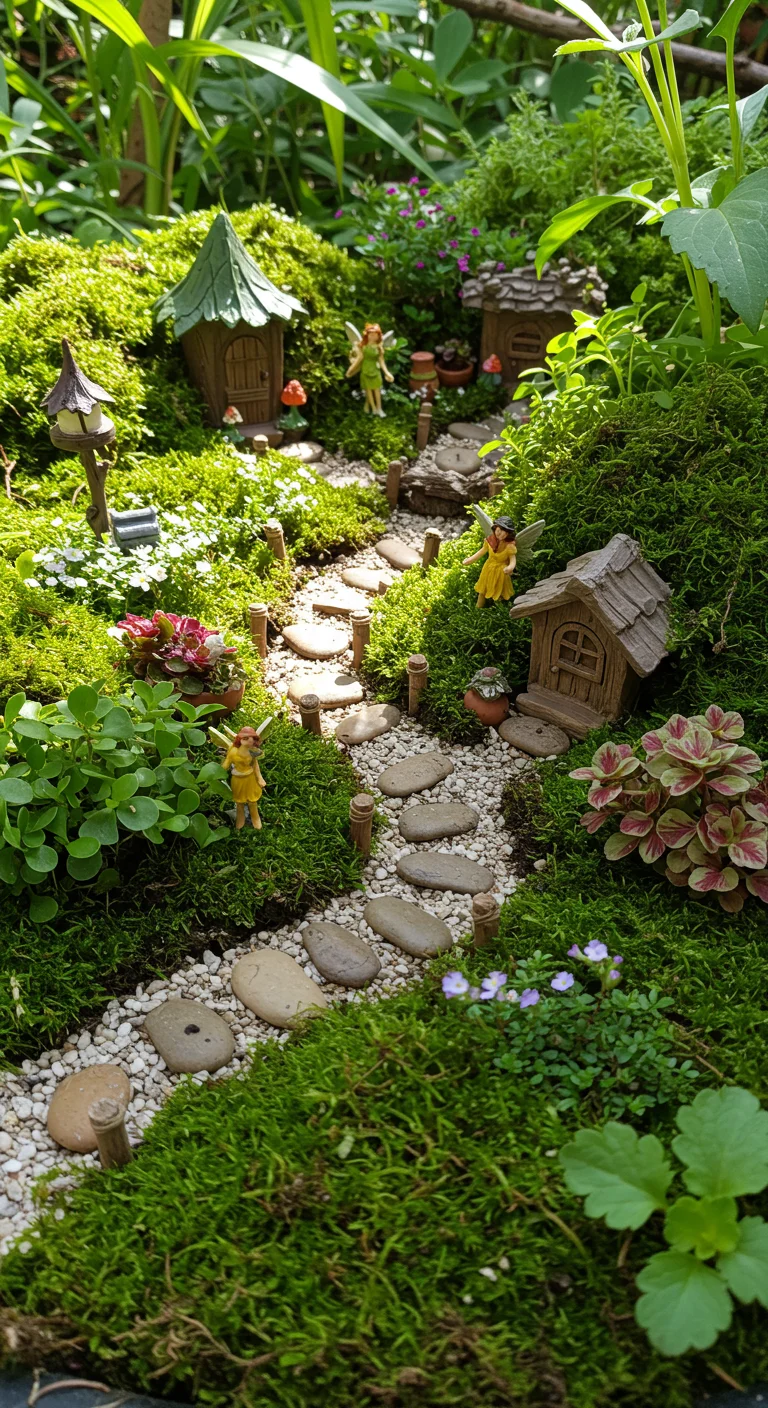
Creating a fairy garden allows you to blend nature with imagination, and choosing the right plant arrangements is key to crafting an enchanting miniature landscape. Begin by selecting low-growing plants like moss, succulents, or creeping thyme, which can serve as lush carpets for your fairy world. Incorporate colorful blooms like miniature violas or dwarf pansies to add pops of color, while the delicate foliage of ferns can provide texture and depth. Arrange your plants in clusters to create distinct zones, such as a cozy nook or a whimsical path, ensuring each area has its own charm. Don’t forget to add decorative elements like miniature furniture or tiny fairy figurines to enhance the magical atmosphere. Regular watering and maintenance will keep your fairy garden vibrant and inviting, making it a delightful retreat for both fairies and nature lovers alike.

